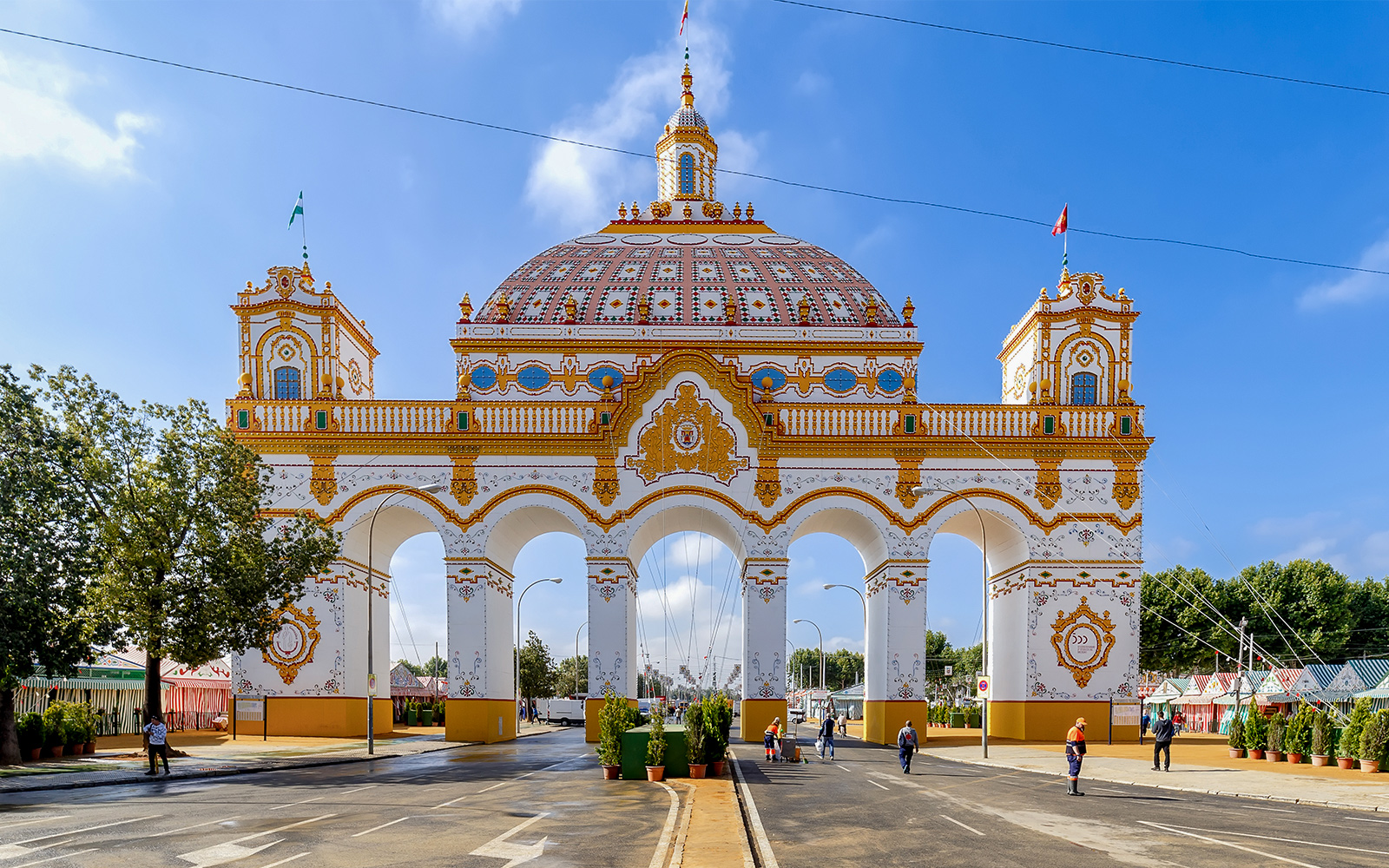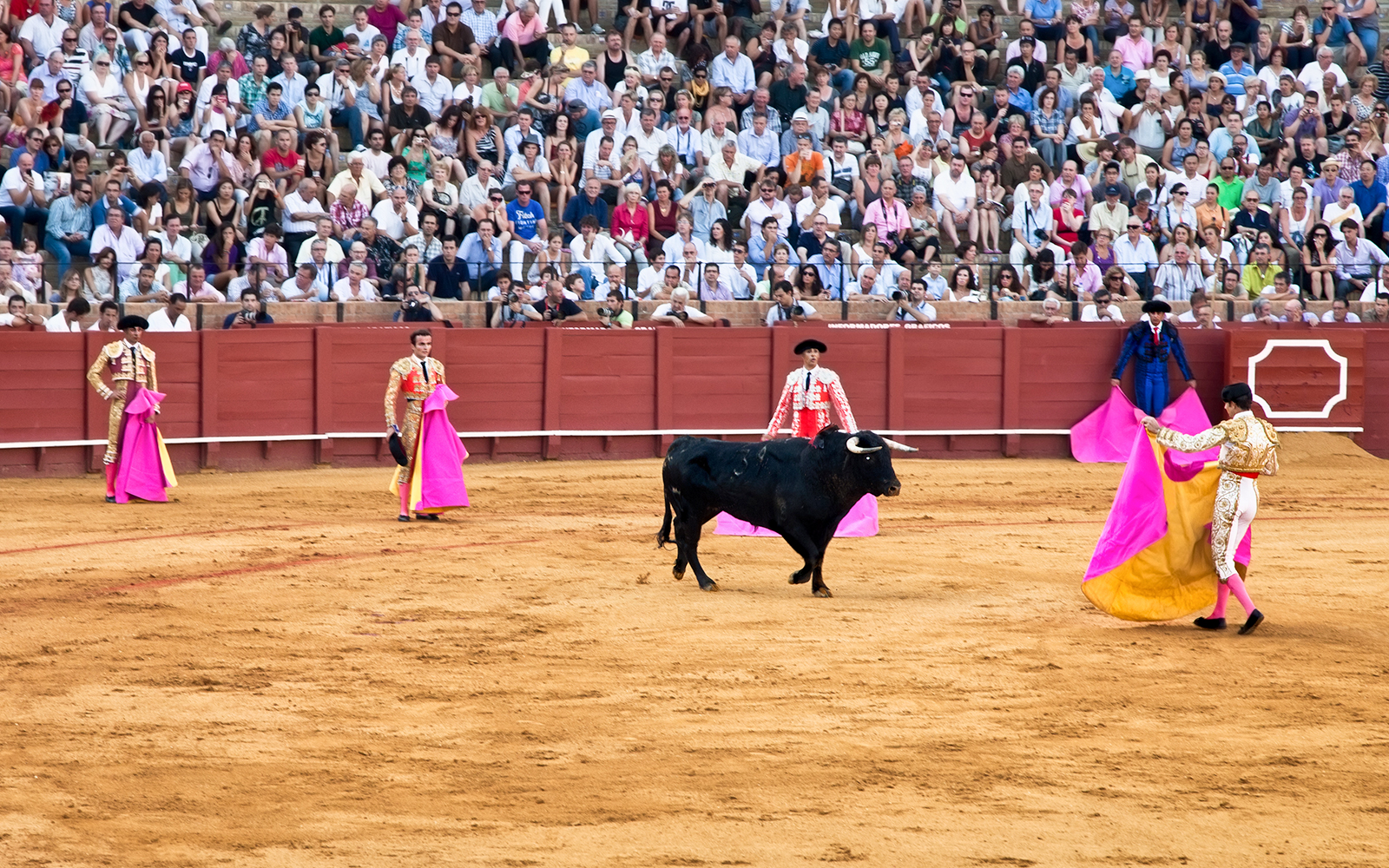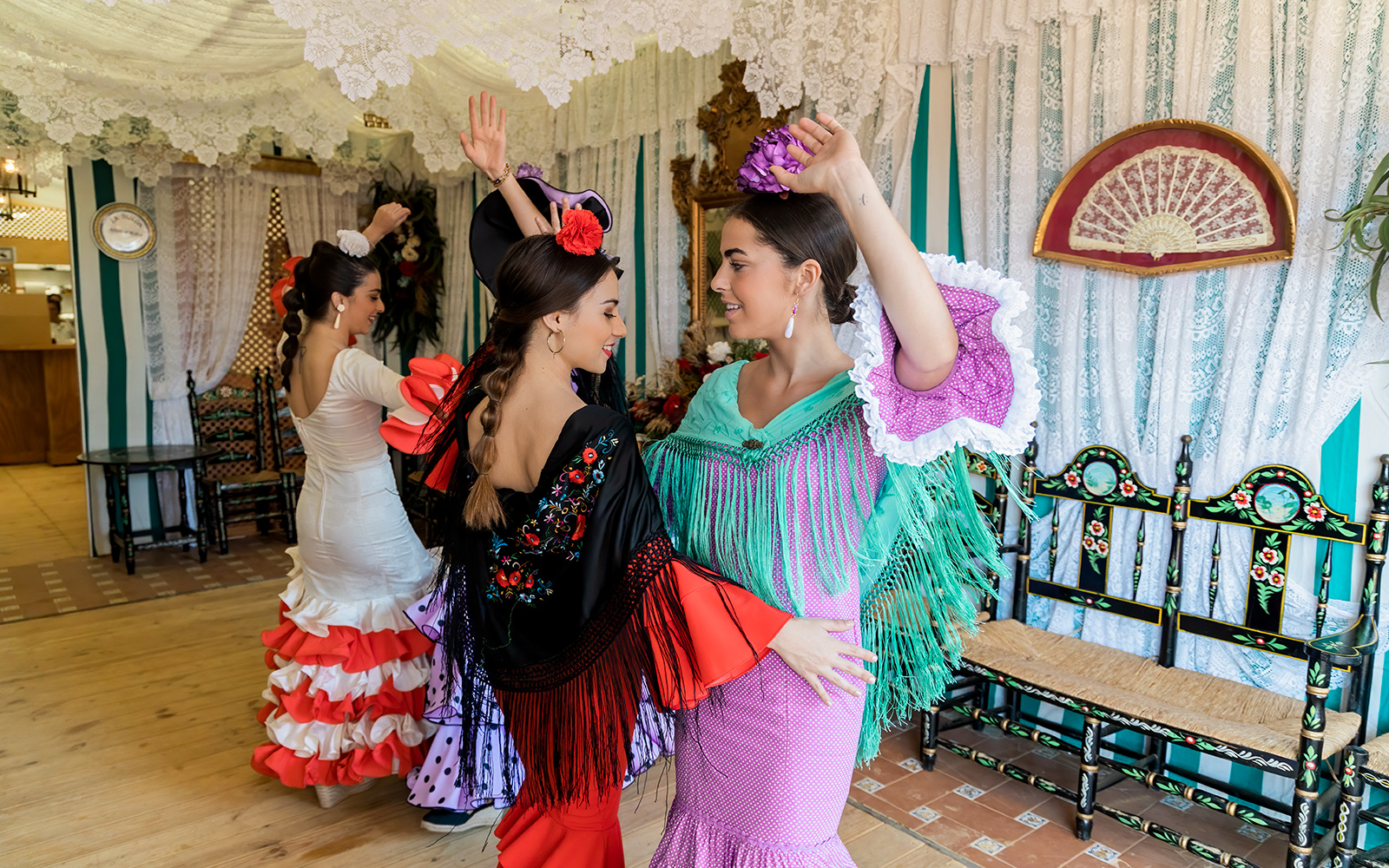Feria de Sevilla or The Seville Fair is an annual celebration that takes place in April, showcasing the vibrant Andalusian culture. The atmosphere is lively with traditional flamenco performances, colorful costumes, and the aroma of delicious local cuisine. The fairgrounds come alive with music, dance, and the friendly camaraderie of the Sevillanos. The city comes together and celebrates their rich heritage!
History of Feria de Sevilla

Originally established in 1846 as a three-day trading fair, the event has grown to become one of the city's most anticipated annual celebrations. By the 1920s, the Seville Fair had transformed into a celebration of the city's culture and traditions. The fair continued to grow in popularity over the decades, even while the Spanish Civil War was on. The fairgrounds were divided into distinct streets, each lined with colorful casetas, or tents, where locals and visitors alike could enjoy traditional music, dance, and cuisine. In 1973, the fair was relocated to Los Remedios.
Where is it held?
The fair continues to take place in Los Remedios, as it accommodates the growing number of attendees. The fairgrounds in Los Remedios now cover an expansive area, with over 1,000 casetas spread across numerous streets. The fair is divided into distinct zones, each with its own unique atmosphere and offerings.
This year Feria de Sevilla will be held from Sunday 14th April to Saturday 20th April, 2024 and is expected to host approximately 5 million visitors
Understanding The Seville Fair
1The Portada
The Portada, or main entrance, is an elaborate archway that serves as the grand entrance to the fair. It is designed with colorful tiles, and often features statues or other architectural elements that pay homage to Seville's cultural heritage.

2Casetas
The casetas are the tents or pavilions that line the streets of the fairgrounds. These colorful marquee tents are organized by families, friends, companies, clubs or municipalities and serve as gathering places for traditional Andalusian entertainment. Each caseta has its own unique decor, atmosphere, and offerings. Mind you the casetas are private and you’ll need an invitation to enter. The caseta run by the municipality is the central gathering place. There are also seven casetas for each district of Seville. You'll find a few which are free to visit though.

3The bullfight
The bullfight is another integral part of the Seville Fair. Held in the historic Plaza de Toros de la Real Maestranza, these corridas de toros (bullfights) draw large crowds who come to witness the age-old tradition.

4Sevillana
The Sevillana, a lively and rhythmic form of flamenco dance, is another highlight of the Seville Fair. Impromptu dances often spontaneously erupt, showcasing the innate musicality and joie de vivre of the Sevillanos.

5The fabulous food
The fairgrounds are filled with the aromas of traditional Andalusian cuisine, from sizzling tapas to hearty stews. You can try out local dishes like gazpacho, jamón ibérico, and freshly fried churros. Rebujito is a refreshing sherry-based cocktail that is a staple of the Seville Fair. The last day of the fair is La Noche del Pescaíto (night of fish) and the fairgrounds are filled with the aroma of freshly fried seafood.

Dress code for Feria de Sevilla

The Seville Fair has a distinct dress code. Women often wear the traditional flamenco dresses, known as trajes de flamenca, with colorful flowers on their heads. Men often wear suits or traditional Andalusian attire, such as the short jacket called a chaquetilla and the wide-brimmed hat known as a cordobés. The traditional footwear for the Seville Fair includes flamenco shoes for women, often with high heels, and leather boots or dress shoes for men. Not to say that it’s mandatory but avoid wearing casuals, it may look out of place among all the traditional clothing.


